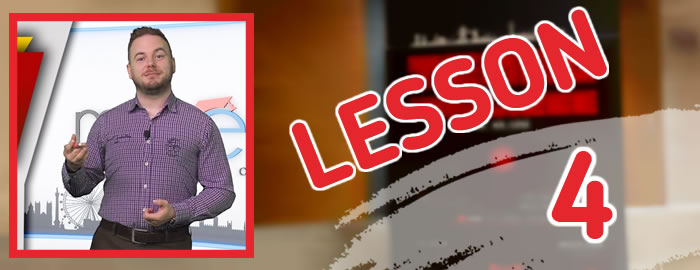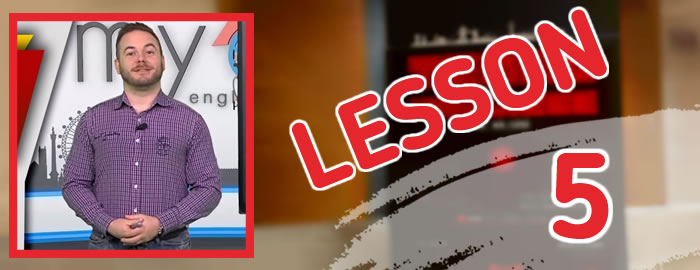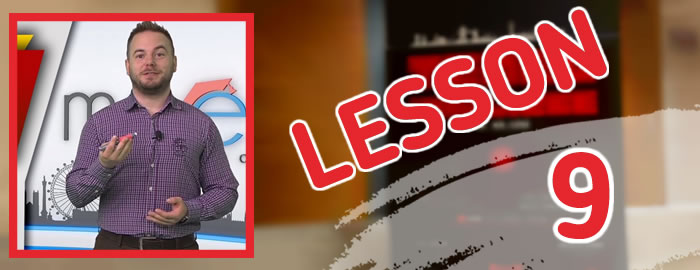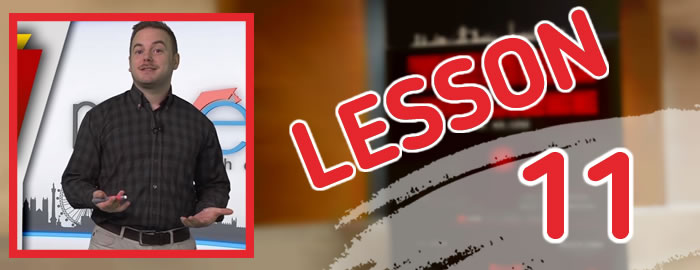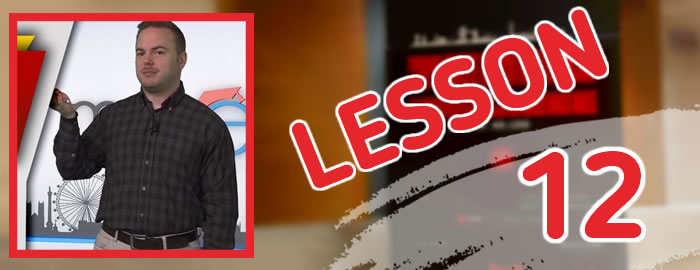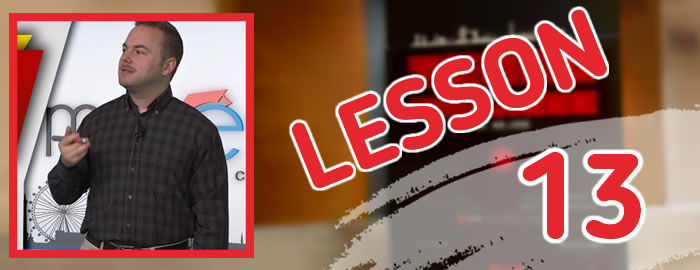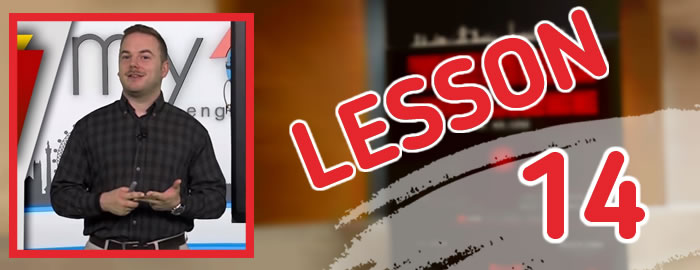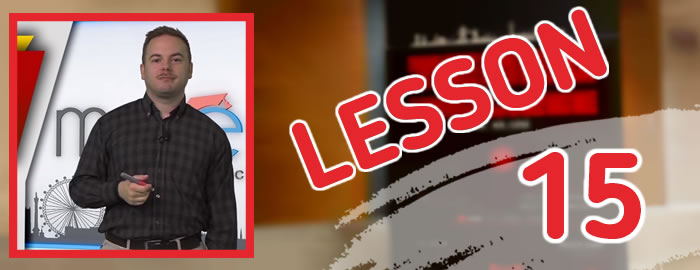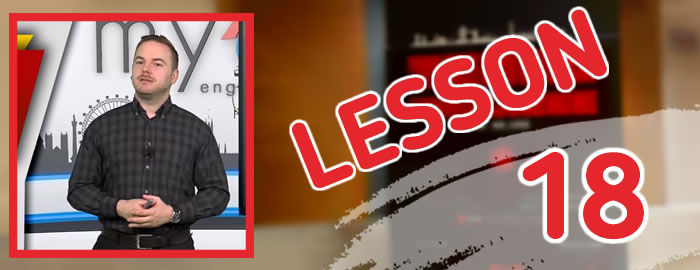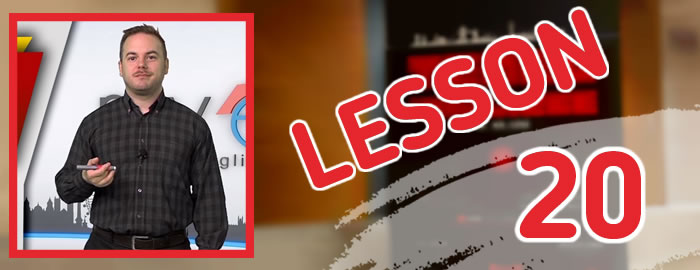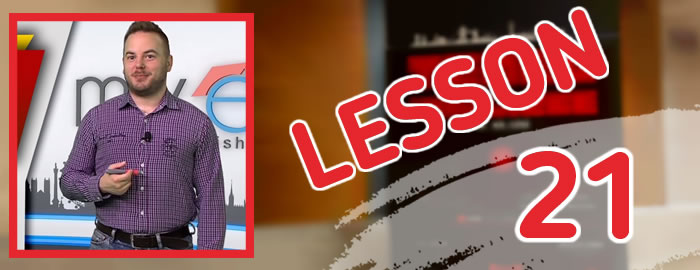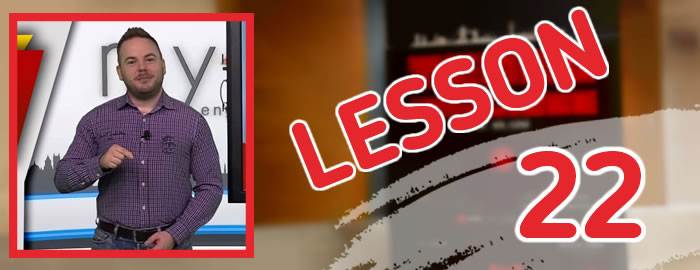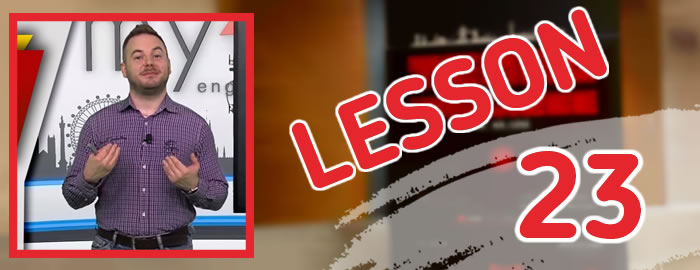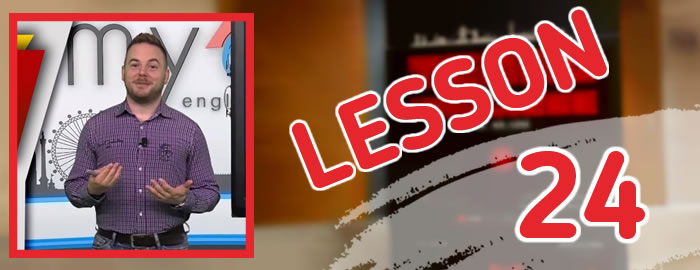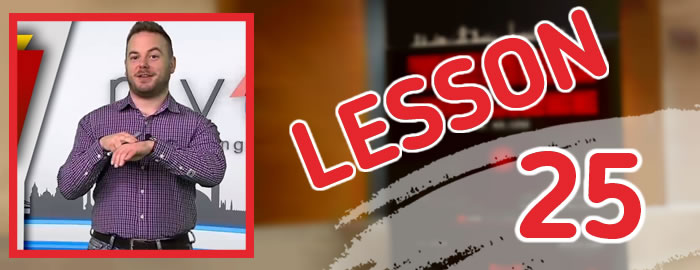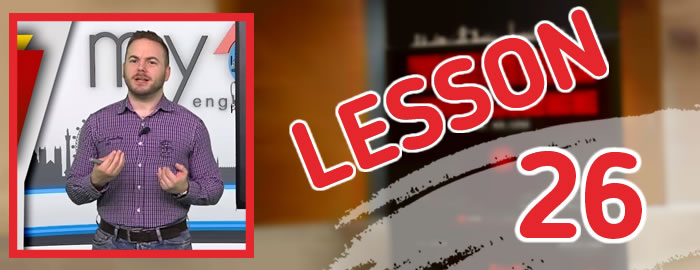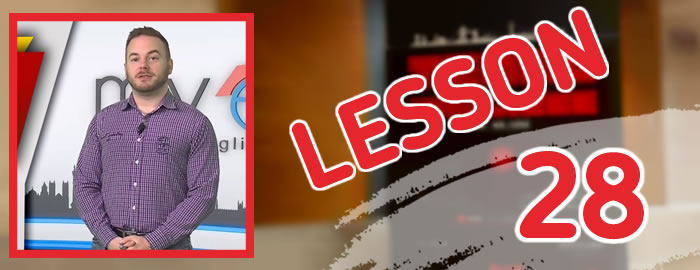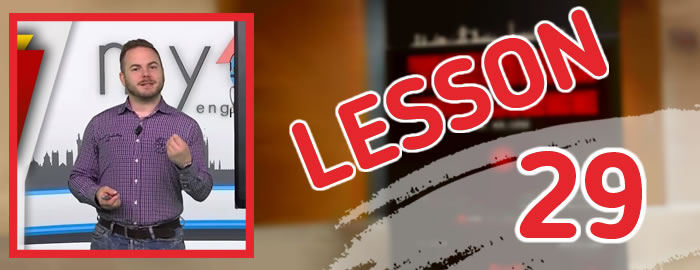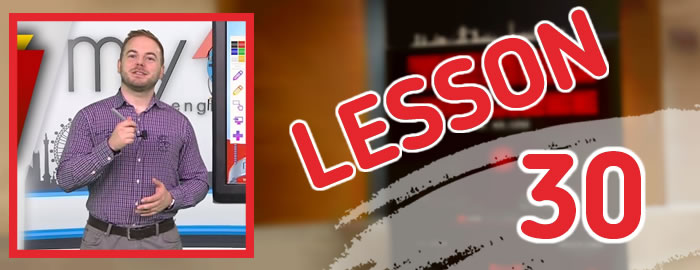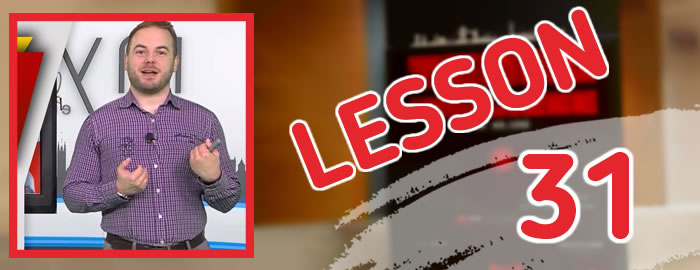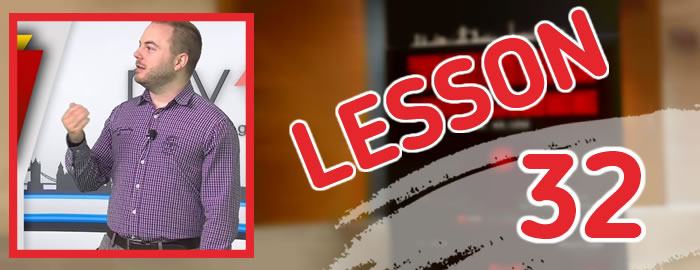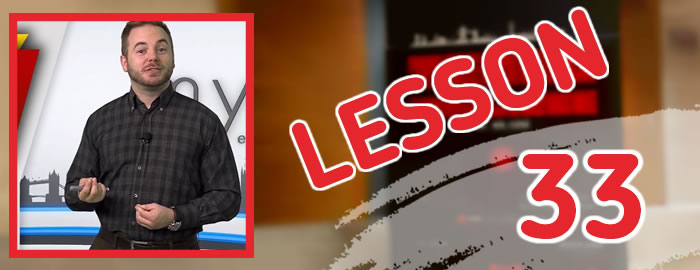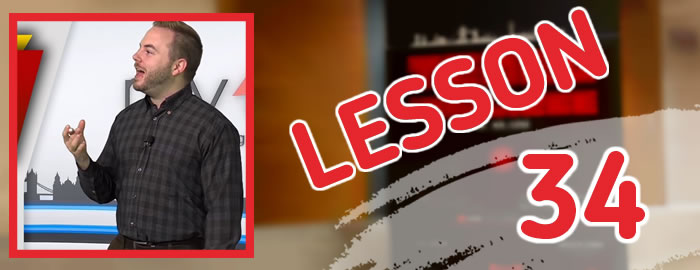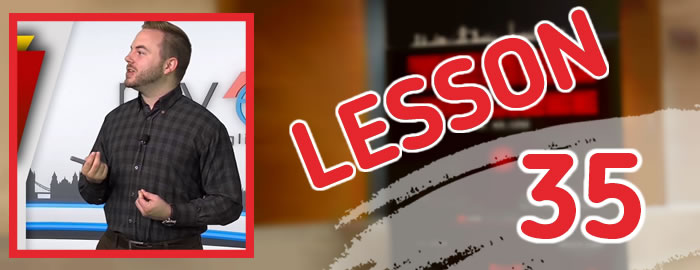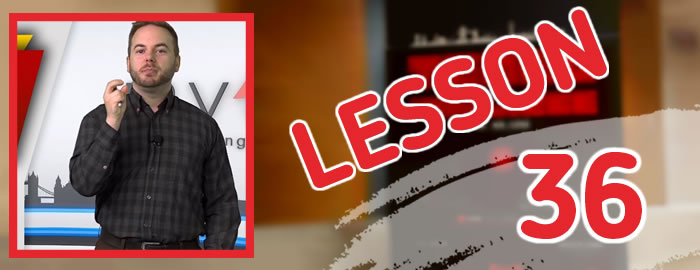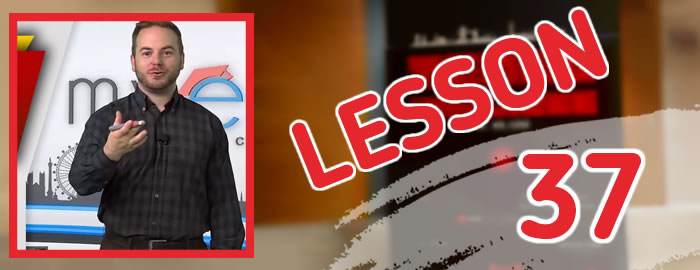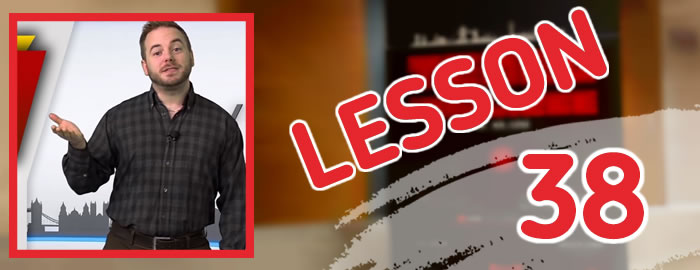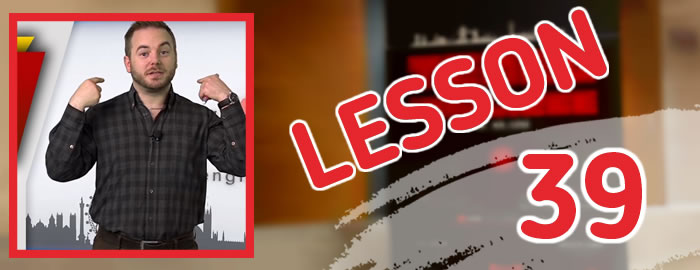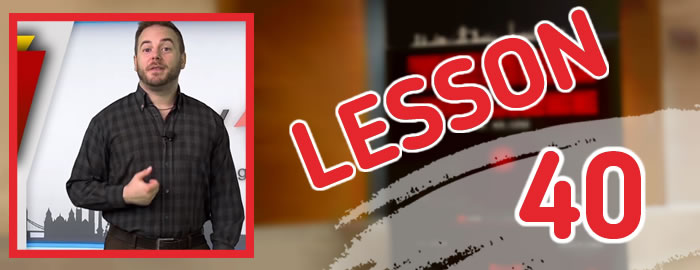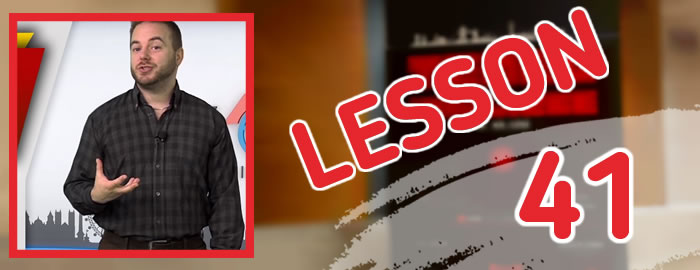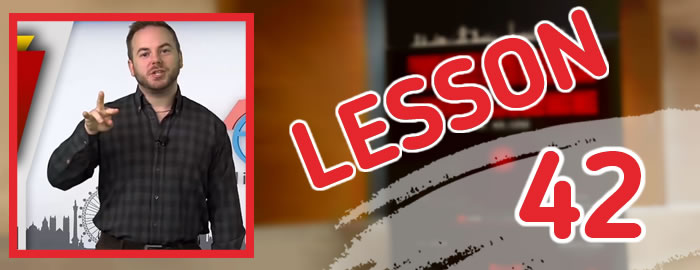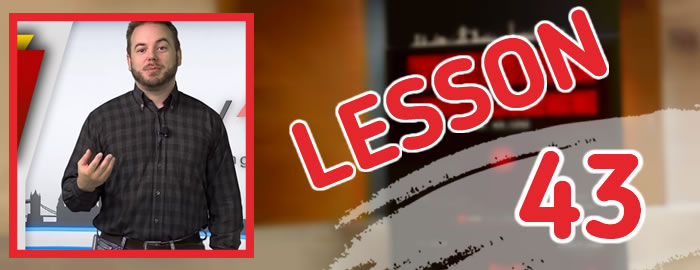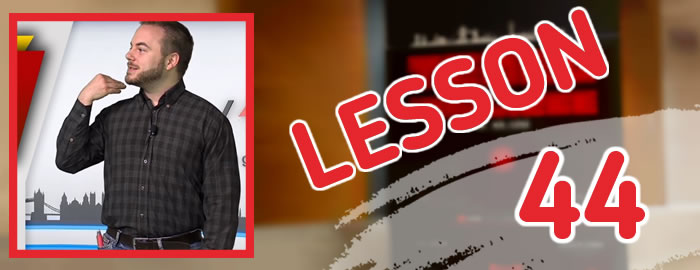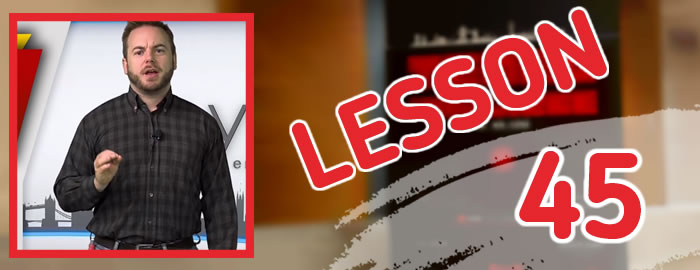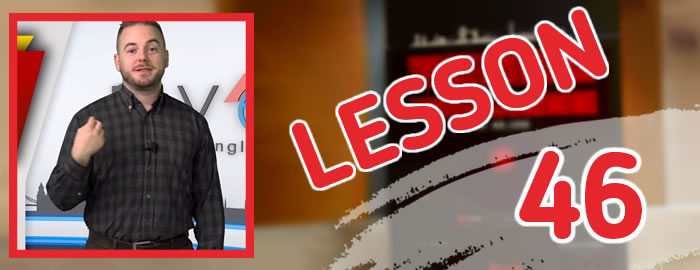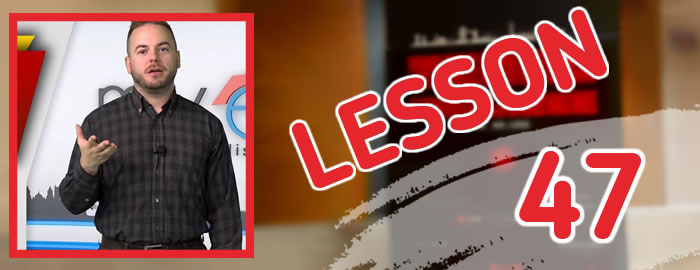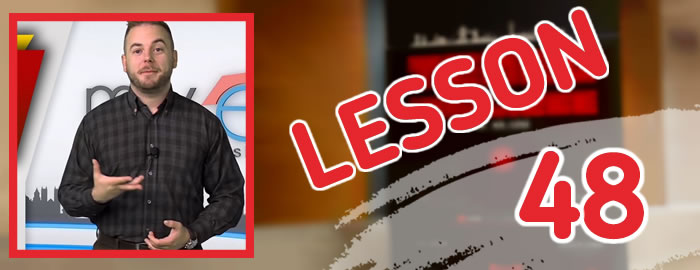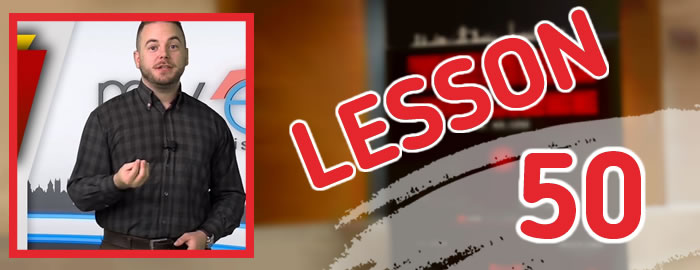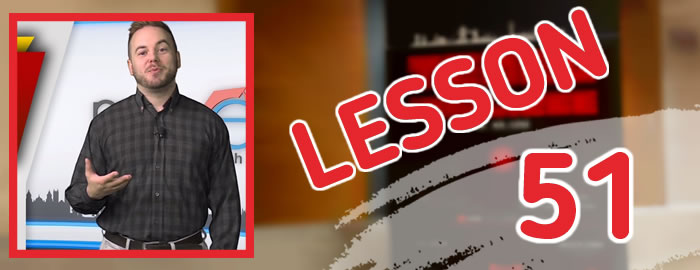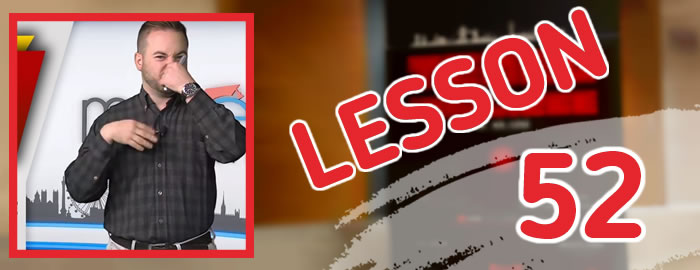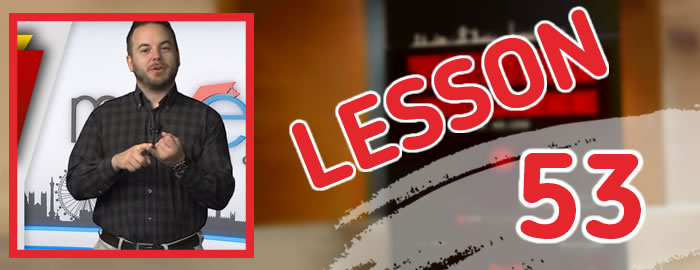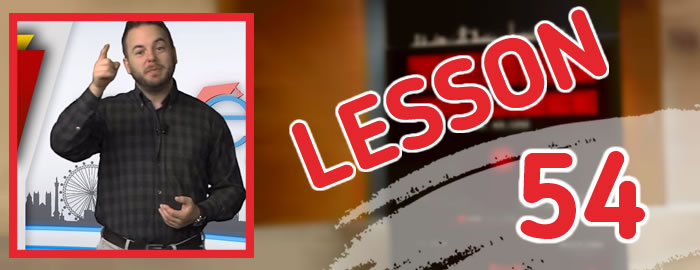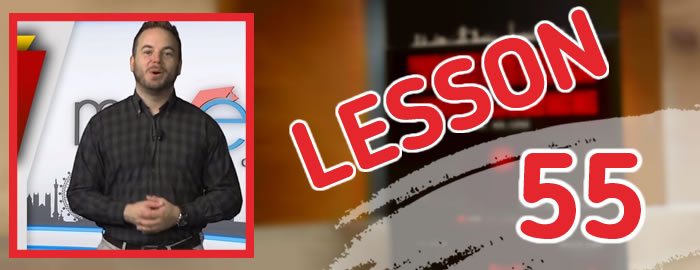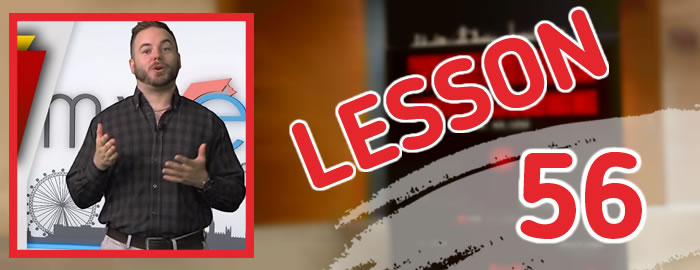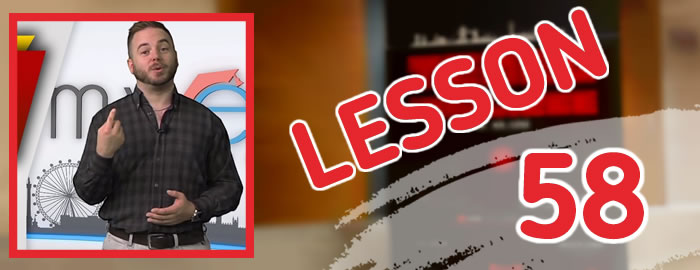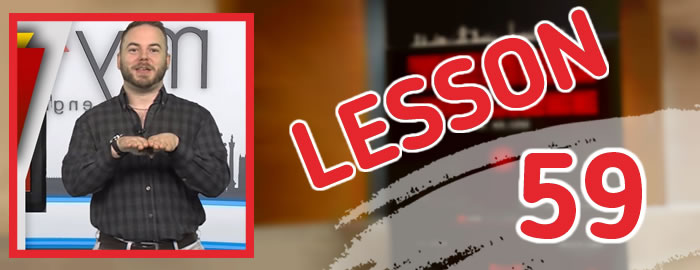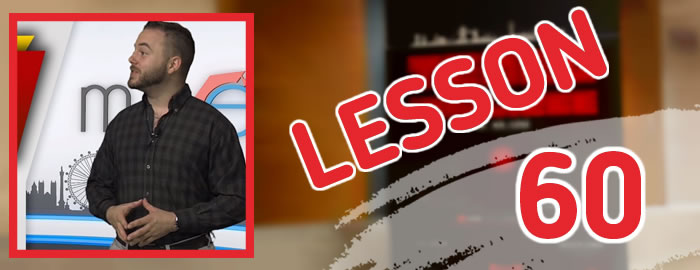Lesson 1: Noun + Is + Noun
In this lesson, you will learn (Noun + is + Noun) sentence structures. This course is the video lesson of our BASIC ENGLISH GRAMMAR book.
WATCH THE LESSONLesson 2: Noun + Are + Noun
In this lesson, you will learn (Noun + are + Noun) sentence structures. This course is the video lesson of our BASIC ENGLISH GRAMMAR book.
WATCH THE LESSONLesson 3: Pronoun + Be + Noun
In this lesson, you will learn (Pronoun + be + Noun) sentence structures. This course is the video lesson of our BASIC ENGLISH GRAMMAR book. (For Turkish Market)
WATCH THE LESSONLesson 4: Be + Adjective
In this lesson, you will learn (Be + Adjective) sentence structures. This course is the video lesson of our BASIC ENGLISH GRAMMAR book. (For Turkish Market)
WATCH THE LESSONLesson 5: Be + Location
In this lesson, you will learn (Be + Location) sentence structures. This course is the video lesson of our BASIC ENGLISH GRAMMAR book. (For Turkish Market)
WATCH THE LESSONLesson 6: Yes/No Questions with Be
In this lesson, you will learn (Yes - No Question) sentence structures. This course is the video lesson of our BASIC ENGLISH GRAMMAR book. (For Turkish Market)
WATCH THE LESSONLesson 7: Where Questions with Be
In this lesson, you will learn (WHERE) sentence structures. This course is the video lesson of our BASIC ENGLISH GRAMMAR book. (For Turkish Market)
WATCH THE LESSONLesson 8: Using Have, Has and Possessive Adjectives
In this lesson, you will learn (Have-Has Possessive Structures and usages of possessive adjectives). This course is the video lesson of our BASIC ENGLISH GRAMMAR book. (For Turkish Market)
WATCH THE LESSONLesson 9: Using This, That, These Those
In this lesson, you will learn (This - That - These - Those Structures and usages). This course is the video lesson of our BASIC ENGLISH GRAMMAR book. (For Turkish Market)
WATCH THE LESSONLesson 10: What and Who Questions with Be
In this lesson, you will learn (What and Who Questions with Be Structures and usages). This course is the video lesson of our BASIC ENGLISH GRAMMAR book. (For Turkish Market)
WATCH THE LESSONLesson 11: Using It to Talk about Time
In this lesson, you will learn (Using it to Talk about Time - Structures and usages). This course is the video lesson of our BASIC ENGLISH GRAMMAR book. (For Turkish Market)
WATCH THE LESSONLesson 12: Simple Present Tense
In this lesson, you will learn (Simple Present Tense Structures and usages). This course is the video lesson of our BASIC ENGLISH GRAMMAR book. (For Turkish Market)
WATCH THE LESSONLesson 13: Frequency Adverbs in Simple Present Tense
In this lesson, you will learn (Simple Present Tense Structures and usages). This course is the video lesson of our BASIC ENGLISH GRAMMAR book. (For Turkish Market)
WATCH THE LESSONLesson 14: Spelling and Pronunciation of Final (-s)
In this lesson, you will learn (Spelling and Pronunciation of Final -s). This course is the video lesson of our BASIC ENGLISH GRAMMAR book. (For Turkish Market)
WATCH THE LESSONLesson 15: Negatives and Questions in Simple Present Tense
In this lesson, you will learn (Simple Present Tense and Question in Present Simple). This course is the video lesson of our BASIC ENGLISH GRAMMAR book. (For Turkish Market)
WATCH THE LESSONLesson 16: Information Questions in Simple Present Tense
In this lesson, you will learn (Information Questions in Simple Present Tense). This course is the video lesson of our BASIC ENGLISH GRAMMAR book. (For Turkish Market)
WATCH THE LESSONLesson 17: Present Continuous Tense
In this lesson, you will learn (Present Continuous / Progressive Tense, structures, and rules). This course is the video lesson of our BASIC ENGLISH GRAMMAR book. (For Turkish Market)
WATCH THE LESSONLesson 18: Questions is Present Continuous Tense
In this lesson, you will learn (Present Continuous / Progressive Tense, structures, Questions, and rules). This course is the video lesson of our BASIC ENGLISH GRAMMAR book. (For Turkish Market)
WATCH THE LESSONLesson 19: Using Present Continuous to Express Future Time
In this lesson, you will learn (Present Continuous / Progressive Tense, for Future structures, Questions, and rules). This course is the video lesson of our BASIC ENGLISH GRAMMAR book. (For Turkish Market)
WATCH THE LESSONLesson 20: Non-Action Verbs
In this lesson, you will learn (Stative Verbs - Non-Action Verbs which do not take ing ). This course is the video lesson of our BASIC ENGLISH GRAMMAR book. (For Turkish Market)
WATCH THE LESSONLesson 21: Use of Some Non-Action Verbs
In this lesson, you will learn (Stative Verbs - Non-Action Verbs which do not take ing ). This course is the video lesson of our BASIC ENGLISH GRAMMAR book. (For Turkish Market)
WATCH THE LESSONLesson 22: Would Like
In this lesson, you will learn (WOULD LIKE - structure and usage ). This course is the video lesson of our BASIC ENGLISH GRAMMAR book. (For Turkish Market)
WATCH THE LESSONLesson 23: Comparing the Uses of Think
In this lesson, you will learn (THINK - structure and usage ). This course is the video lesson of our BASIC ENGLISH GRAMMAR book. (For Turkish Market)
WATCH THE LESSONLesson 24: Usage of There is and There are
In this lesson, you will learn (THERE IS - THERE ARE - structures and usage). This course is the video lesson of our BASIC ENGLISH GRAMMAR book. (For Turkish Market)
WATCH THE LESSONLesson 25: Prepositions of Location
In this lesson, you will learn (Prepositions - here-in-at-on - structures and usage). This course is the video lesson of our BASIC ENGLISH GRAMMAR book. (For Turkish Market)
WATCH THE LESSONLesson 26: Subject Pronouns and Object Pronouns
In this lesson, you will learn (Subject Pronouns and Object Pronouns - structures and usage). This course is the video lesson of our BASIC ENGLISH GRAMMAR book.
WATCH THE LESSONLesson 27: Singular and Plural Nouns
In this lesson, you will learn (Singular and Plural Nouns - structures and usage). This course is the video lesson of our BASIC ENGLISH GRAMMAR book.
WATCH THE LESSONLesson 28: Countable and Uncountable Nouns
In this lesson, you will learn (Countable and Uncountable Nouns - structures and usage). This course is the video lesson of our BASIC ENGLISH GRAMMAR book. (For Turkish Market)
WATCH THE LESSONLesson 29: Using THE
In this lesson, you will learn "THE" article and how to & where to use it in a sentence. This course is the video lesson of our BASIC ENGLISH GRAMMAR book. (For Turkish Market)
WATCH THE LESSONLesson 30: Indefinite Pronouns
In this lesson, you will learn "INDEFINITE pronouns" and how to use them in a sentence. This course is the video lesson of our BASIC ENGLISH GRAMMAR book. (For Turkish Market)
WATCH THE LESSONLesson 31: Simple Past Tense with Be
In this lesson, you will learn "Simple Past Tense with Be" and how to use them in a sentence. This course is the video lesson of our BASIC ENGLISH GRAMMAR book. (For Turkish Market)
WATCH THE LESSONLesson 32: Simple Past Tense with Regular Verbs
In this lesson, you will learn "Simple Past Tense with Regular Verbs" and how to use them in a sentence. This course is the video lesson of our BASIC ENGLISH GRAMMAR book. (For Turkish Market)
WATCH THE LESSONLesson 33: Simple Past Tense with Irregular Verbs
In this English lesson, you will learn about the usage of The Simple Past Tense - irregular verbs. The comprehensive Udemy course for our lesson is also available.
WATCH THE LESSONLesson 34: Questions and Negatives in Simple Past Tense
In this English lesson, you will learn Simple Past Tense - questions - answers - positive and negative responses and their uses. The comprehensive Udemy course of our course is also available.
WATCH THE LESSONLesson 35: Who, What and Which Questions in Simple Past Tense
Learn how to use Who, What and Which Questions in Simple Past Tense with a lot of examples. We also have courses at UDEMY.
WATCH THE LESSONLesson 36: Time Clauses - Before, After and When
In this lesson, you will learn A1-A2 Elementary Level English - Time Clauses with (Before, After, When)
WATCH THE LESSONLesson 37: Expressing Future Time with Will
In this lesson, you will learn how to make sentences and express something in the future tense with the structure "will + do" in English. You can watch this entire course on the Udemy platform.
WATCH THE LESSONLesson 38: Expressing Future Time with Be Going To
In this lesson, we will learn how to create future tense sentences in English by examining the structure "be going to + verb". You can find the full lesson on the udemy platform.
WATCH THE LESSONLesson 39: Time Words Used in Past Time and Future Time
You will learn the past tense and future tense word structures that we use in past tense and future tense sentences. You can find our full course on the Udemy platform.
WATCH THE LESSONLesson 40: What + Do Questions
You will learn the "what + do" question pattern in English and you will be able to make sentences in the past, present and future tense. The full course is also available on Udemy.
WATCH THE LESSONLesson 41: May, Might and Will for Present and Future Possibility
In English, the words 'may', 'might' and 'will' are used to express different degrees of probability. In this course, you will learn sentences that express probability. You can find the full course on the Udemy platform.
WATCH THE LESSONLesson 42: Past and Future Time Clauses - Before, After and When
You will learn how to form past and future tense sentences with "before", "after", and "when" in English. The full course is available on Udemy.
WATCH THE LESSONLesson 43: If Clauses
By learning if clauses, we learn what kind of outcomes will happen under certain conditions. These structures help us express time and probability and are used in communication. You can access the full course on the Udemy platform.
WATCH THE LESSONLesson 44: Expressing Ability with CAN, COULD and BE ABLE TO
In this course, you will learn how to express ability with "can", "could" and "be able to". You can access the full course on the Udemy platform.
WATCH THE LESSONLesson 45: Using Very and Too with Adjectives
You will learn how to use "very" and "too" together with the adjectives "very" and "too" and the differences in usage. The full course is available on the Udemy platform.
WATCH THE LESSONLesson 46: Too + Adjective
You will learn to make sentences with the structure "too + adjective", which usually expresses negativity. It is used to emphasize situations that exceed a certain limit. You can access our full course on the Udemy platform.
WATCH THE LESSONLesson 47: Using Enough with Adjectives and Nouns
In this lesson, we learn how to use the word "enough" with an adjective or noun to express that a certain amount or degree is enough. The full course is available on the Udemy platform.
WATCH THE LESSONLesson 48: Polite Requests with May, Could, Can, Would
In this course, you will learn how to use the constructions "may", "could", "can", and "would" to form polite requests. The full course is available on Udemy.
WATCH THE LESSONLesson 49: Imperatives
In this course, you will learn how to construct imperatives with positive and negative expressions. You can access the full course on the Udemy platform.
WATCH THE LESSONLesson 50: Modifying Nouns with Adjectives and Nouns
In this course, you will learn how to qualify nouns with adjectives and nouns in English. You can find our full course on the Udemy platform.
WATCH THE LESSONLesson 51: Word Order Of Adjectives
In English, we can use more than one adjective to form a noun phrase. In this lesson, we will learn the rules of ordering adjectives. You can access the full course on the Udemy platform.
WATCH THE LESSONLesson 52: Ouantity with All of, Most of, Some of, One of, None of
You will learn "all of", "most of", "some of", "one of" and "none of" structures and sentences expressing quantity in English. You can access the full course on the Udemy platform.
WATCH THE LESSONLesson 53: Every + Noun
In this lesson, you will learn the "every + noun" construct in English. This structure is used to specify an element in a class. You can access the full course on the Udemy platform.
WATCH THE LESSONLesson 54: Possessives
You will learn "possessives" in English; nouns, adjectives and question forms. You can access the full course on the Udemy platform.
WATCH THE LESSONLesson 55: Direct and Indirect Objects
In this course, you will learn direct and indirect sentence structure in English. The full course is available on Udemy.
WATCH THE LESSONLesson 56: Purpose with FOR and TO
Lorem Ipsum is simply dummy text of the printing and typesetting industry.Lorem Ipsum is simply dummy text of the printing and typesetting industry.
WATCH THE LESSONLesson 57: Comparisons - The Same, Similar, Different, Like, Alike
In English, expressions such as "the same", "similar", "different", "like", and "alike" are used to compare objects or concepts. These expressions enrich communication by emphasizing similarities and differences. You can find the full courses on Udemy.
WATCH THE LESSONLesson 58: Comparatives
Constructions used to make comparisons in English include "adjective +er +than" and "more + adjective + than". These constructions allow you to make comparisons by specifying the characteristics of objects or people. You can find our full course on the Udemy platform.
WATCH THE LESSONLesson 59: Comparisons with As...As, Less, But
The constructions "as...as, less, but" are simple and common constructions used to make comparisons in English, emphasizing the differences and similarities between objects. You can find the full course on the Udemy platform.
WATCH THE LESSONLesson 60: Superlatives
The superlatives topic refers to the structures used in English to indicate that something is the most superior or the least among others. The forms 'The + adjective + est' and 'the most + adjective' are the most commonly used superlative structures.You can find the full course on Udemy.
WATCH THE LESSONLesson 61: Adverbs
"Adverbs" are words used to describe or modify verbs, adjectives or other adverbs in English and are used to indicate how actions in sentences occur or when, where or how often an event happens. The full course is available on Udemy.
WATCH THE LESSON


